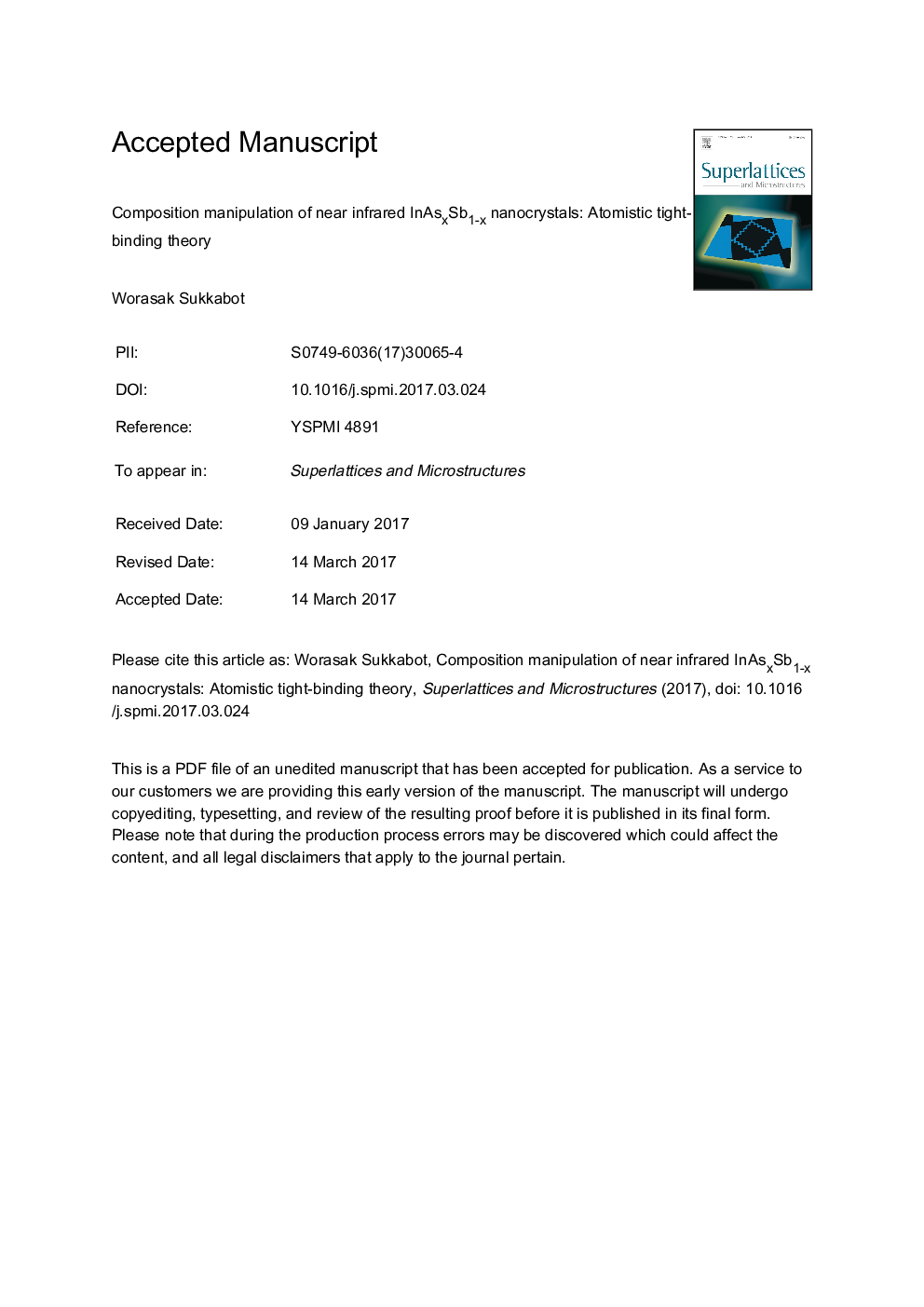| Article ID | Journal | Published Year | Pages | File Type |
|---|---|---|---|---|
| 7940665 | Superlattices and Microstructures | 2017 | 19 Pages |
Abstract
Based on a successful atomistic tight-binding model in the conjunction with an empirical bowing parameter and the widely used virtual crystal approximation, the theoretical investigations of near infrared InAsxSb1âx nanocrystals with the experimentally synthesized sizes and As compositions (x) are reported. Under various experimental As compositions (x), the single-particle spectra, charge densities, density of states (DOS), overlaps of ground electron and hole wave functions, optical spectra, atomistic electron-hole interactions and stokes shift are numerically computed. I report the correlation of the structural and optical properties of InAsxSb1âx nanocrystals with different alloy compositions (x). With the increasing compositions (x), the single-electron energies are increased, while the single-hole energies are reduced, thus introducing the wider optical band gaps. The atomistic tight-binding model reproduces very well the change in the band gap values with the compositions observed in the experimental reports. The As compositions (x) of alloy InAsxSb1âx nanocrystals are used to propel photonic and optoelectronic device performance in a broad range of the near infrared spectrum with the wave length from 825 to 990Â nm. With the increasing content (x), the optical intensities are reduced, whereas atomistic electron-hole interactions and stokes shift are progressively increased. Finally, the present systematic study of alloy InAsxSb1âx nanocrystals is one of the most important milestones on the road to provide the understanding of the composition-dependent structural and optical properties and a complete tactic to design a facile band gap modulation method of preparing the interesting near infrared emitting devices and detectors.
Related Topics
Physical Sciences and Engineering
Materials Science
Electronic, Optical and Magnetic Materials
Authors
Worasak Sukkabot,
